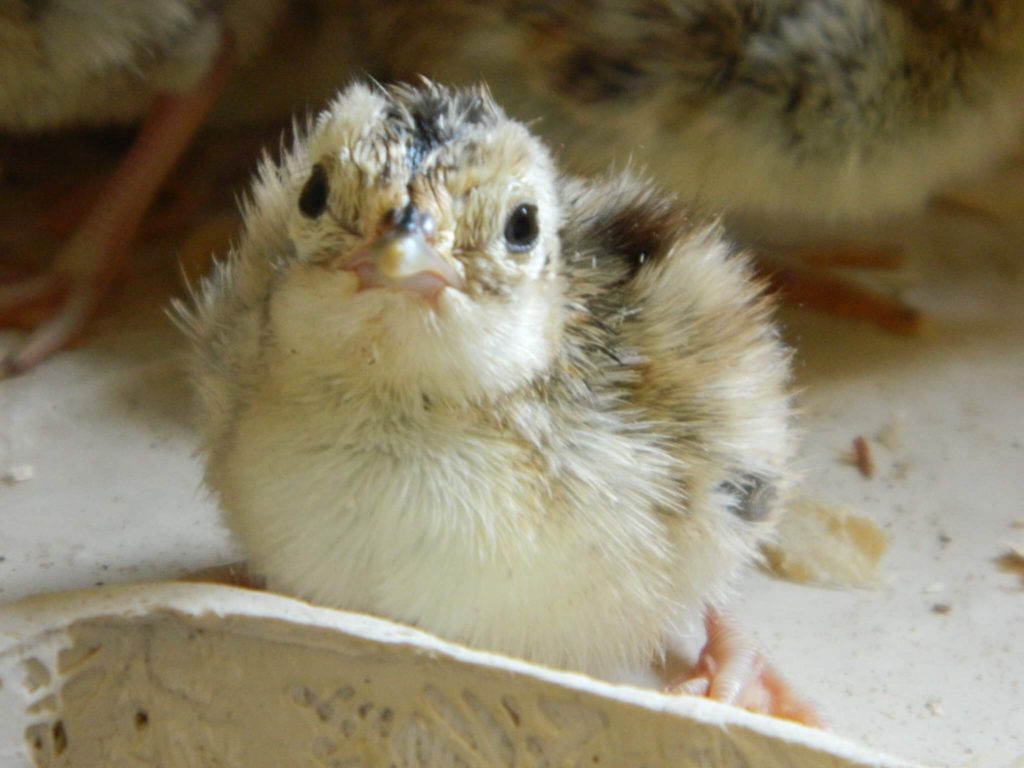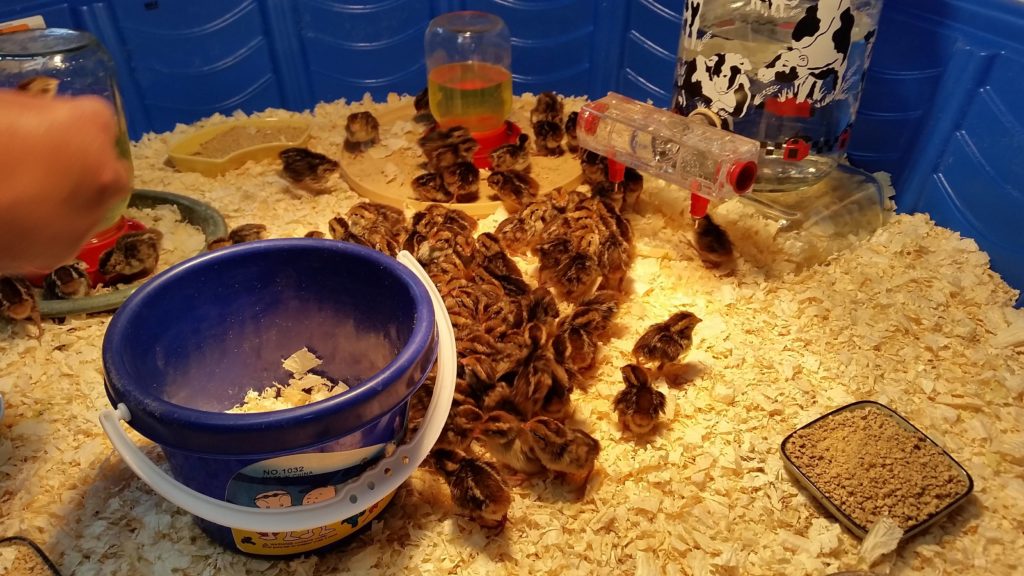How to take care of baby quail

If you choose to add quail to your farm or homestead, raising your own baby quail is a simple, cost-effective way to sustain your stock. Once you have successfully incubated and hatched quail eggs, the next step is learning how to take care of baby quail.
Baby quail require a few weeks of special care before they can be integrated into the adult quail population. First, you need to move newly-hatched baby quail from the incubator to a brooder.
“Some people say you can leave them up to 48 hours because the chick will absorb the yolk into their body, [so they] don’t need food or water,” said M Segrist, owner of WoodBottom Quail Farms in Bethel, Ohio. “We wait no longer than 12 hours.”
Segrist has a special brooder built into her incubator.
“You [reduce the temperature by] five degrees every week for their age,” Segrist said. “It is 99.5 [degrees Fahrenheit], [so] the brooder [should be] 95 [degrees Fahrenheit] and go down five degrees every week until they are about two weeks old.”
If you want to cut costs, Scott Huber, owner of Itty Bitty Farm in Columbia Falls, Maine, recommended a homemade brooder made from a 40-gallon plastic tote. If you go this route, he recommended attaching a heat lamp, keeping the temperature around 100 degrees Fahrenheit under the lamp and giving the quail chicks enough room to run in and out from under it.
Huber said you also want to give the chicks water and a high-protein feed. He recommended keeping water and food containers covered with small openings for access so the quail are not tempted to use them as a toilet or tub.
Huber also said to put a screen over the top of the brooder after about a week.
“They do fly,” Huber said. “Past a week, you want to keep a screen over brooder, otherwise they come out like popcorn.”
Keep the quail in the brooder for about two weeks. Then, you can move them to the cages in the same location where the other adults are kept, whether that is outside during the summer or in a small barn. Keep the baby quail in separate cages from the full-grown quail population for a few more weeks before integrating them fully.
“If we have a male adult in there, they can be a little aggressive with the babies so we try to keep them separated until they’re about the same size,” Segrist said. “When they’re six or seven weeks old, then we’ll mingle them all.”
The entire process of incubating quail eggs and growing them to meat harvesting size is faster than most other backyard birds.
“The thing about quail is time,” Segrist said. “They’re so fast. It takes seven to eight weeks of growing to harvest time.”

Though there is some precision involved, Huber said not to be intimidated by incubating quail eggs and raising baby quail.
“It’s about the easiest thing in the world to do,” he chuckled.
